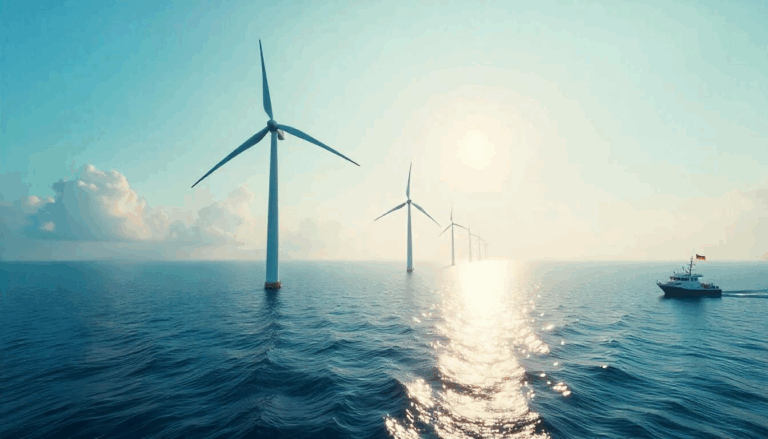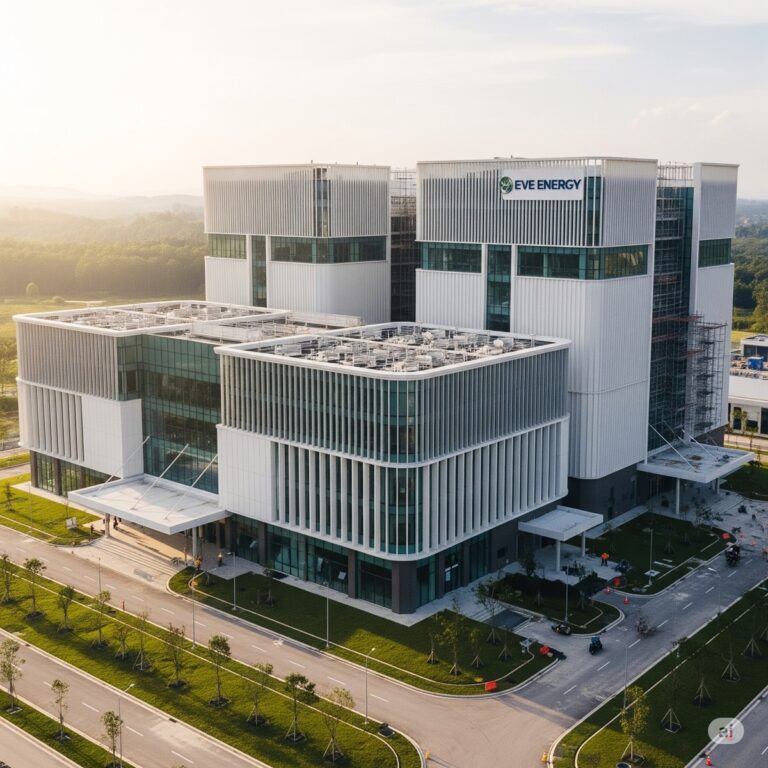Beyond Solar & Wind: Meta’s 1.1 GW Nuclear PPA Signals a New Era for Corporate Clean Energy

Beyond Solar & Wind: Meta’s 1.1 GW Nuclear PPA Signals a New Era for Corporate Clean Energy
For years, “corporate clean energy” conjured images of sprawling solar farms and towering wind turbines. These intermittent renewable sources have undeniably played a vital role in helping companies reduce their carbon footprints. But a recent landmark deal has just rewritten that script: Meta, the tech giant behind Facebook and Instagram, has signed a massive 20-year Power Purchase Agreement (PPA) to buy 1.1 gigawatts of nuclear power from Constellation’s Clinton Clean Energy Center in Illinois.
This groundbreaking agreement comes at a time when the energy demands of data centers, particularly with the explosion of artificial intelligence (AI) applications, are skyrocketing. While solar and wind are indispensable for decarbonization, their reliance on weather conditions poses significant challenges for industries requiring continuous, high-load operations. Meta’s strategic pivot suggests a new approach as corporations seek “always-on,” emissions-free alternatives to truly achieve their ambitious net-zero goals.
Meta’s pivotal nuclear PPA is more than just a power deal; it signals a new era in corporate clean energy procurement. This move is driven by the unique benefits of baseload nuclear power for colossal energy consumers like data centers, and it could pave the way for wider nuclear adoption in the private sector. This article will delve into the specifics of this transformative deal, explore the strategic rationale behind turning to nuclear for tech giants, analyze its impact on the broader clean energy market, and consider what it means for the future of corporate sustainability.
- Beyond Solar & Wind: Meta’s 1.1 GW Nuclear PPA Signals a New Era for Corporate Clean Energy
- 1. The Deal Unpacked: Meta’s Landmark Nuclear Power Purchase Agreement
- 2. Beyond Intermittency: Why Big Tech Needs “Always-On” Clean Power
- 3. A New Dawn for Corporate Clean Energy Procurement?
- 4. The Broader Implications: Nuclear’s Role in the Clean Energy Mix
- 5. What This Means for Corporate Sustainability & ESG Goals
- Conclusion: The Future is Electrified and Diversified.
- Frequently Asked Questions (FAQs) About Meta’s Nuclear PPA and Corporate Clean Energy
1. The Deal Unpacked: Meta’s Landmark Nuclear Power Purchase Agreement
Meta’s recent agreement with Constellation Energy marks a significant milestone in the corporate clean energy landscape. This isn’t just another PPA; it’s a testament to the evolving strategies of tech giants to meet their colossal energy demands with reliable, carbon-free sources.
The deal involves Meta as the buyer and Constellation Energy as the seller and operator of the Clinton Clean Energy Center in Illinois. Commencing in June 2027, the 20-year Power Purchase Agreement secures 1.121 gigawatts (1,121 megawatts) of emissions-free nuclear energy annually for Meta. An additional 30 MW will be supplied through future plant uprates, further increasing the clean energy output.
This long-term commitment is particularly crucial for the Clinton facility. The agreement ensures the continued operation of the plant well beyond its previously anticipated closure in 2027, effectively replacing an expiring state Zero Emission Credit (ZEC) program. This “market-based solution,” as Constellation noted, provides long-term stability for the plant “without ratepayer support.” For Illinois, this translates directly into preserving over 1,100 local jobs and delivering an estimated $13.5 million in annual tax revenue to schools and local services. Environmentally, the deal avoids approximately 34 million metric tons of carbon emissions over its 20-year term, equivalent to removing 7.4 million gasoline cars from the road for a year.
Meta’s decision to secure power from an existing nuclear plant follows a broader request for proposals (RFPs) seeking 1-4 GW of new nuclear generation capacity for delivery in the early 2030s, indicating a clear, long-term strategic shift towards nuclear power.
2. Beyond Intermittency: Why Big Tech Needs “Always-On” Clean Power
The soaring energy demands of data centers, particularly those powering AI and generative AI, are pushing tech giants to rethink their energy procurement strategies. While solar and wind have been foundational to their decarbonization efforts, their inherent intermittency presents a growing challenge.
Data centers require colossal and rapidly escalating electricity needs. Deloitte estimates that data center electricity demand could rise fivefold by 2035, with some AI-focused facilities potentially requiring up to 5 gigawatts (GW)—the output of several large power plants. Meta, for instance, plans to invest a staggering $65 billion in AI infrastructure in 2025 alone, underscoring the scale of their energy requirements.
The critical issue for these operations is baseload reliability. Solar and wind power, while carbon-free, are weather-dependent. The sun doesn’t always shine, and the wind doesn’t always blow. This intermittency means that to ensure uninterrupted 24/7 power for data centers, grid operators often rely on fossil fuel “peaker plants” to fill the gaps, undermining true decarbonization.
Nuclear power, however, offers a unique and compelling solution. Nuclear plants operate continuously, providing “firm baseload power” around the clock with exceptionally high capacity factors, often exceeding 92.5%. This “always-on” clean power is paramount for the uninterrupted operations of data centers and the continuous processing demanded by AI applications.
Furthermore, nuclear offers unparalleled scalability and energy density. A single large nuclear reactor can generate hundreds to over a thousand megawatts of electricity, efficiently meeting the needs of even the largest data centers while requiring a relatively small land footprint compared to vast solar or wind farms. Its virtually zero greenhouse gas emissions during operation make it a powerful tool for achieving deep decarbonization goals, seamlessly integrating into corporate net-zero strategies.

3. A New Dawn for Corporate Clean Energy Procurement?
Meta’s nuclear PPA is not an isolated incident; it’s a powerful indicator of an emerging trend that could redefine corporate clean energy procurement. For years, the default strategy for companies aiming for 100% renewable energy was to sign PPAs for new solar or wind projects. Now, leading corporations are strategically looking beyond these traditional sources.
This shift has been subtly building. Constellation, the same energy provider, signed a similar 20-year agreement with Microsoft last fall, securing power from the revived Three Mile Island nuclear reactor in Pennsylvania, set to restart operations in 2028. This deal alone adds over 800 MW of reliable clean energy to the grid.
Google, another tech titan, has also demonstrated an interest in future nuclear power. They signed a clean energy agreement with Kairos Power to purchase nuclear energy from multiple Small Modular Reactors (SMRs) to be developed by Kairos, aiming for up to 500 MW of new 24/7 carbon-free power by 2030. This highlights a willingness to invest in next-generation nuclear technology. Even figures like OpenAI CEO Sam Altman are backing nuclear start-ups, with Oklo signing non-binding agreements to supply up to 12 GW of electricity to data center operators like Switch.
The culmination of this growing interest was seen at S&P Global’s CERAWeek conference in March 2025, where Amazon, Google, and Meta jointly signed a pledge to help triple global nuclear capacity by 2050. These commitments underscore a fundamental recognition that achieving ambitious decarbonization targets, especially for high-demand operations, requires the inclusion of diverse, reliable, carbon-free energy sources. This strategic diversification also offers long-term price stability against volatile fossil fuel markets, crucial for managing the operational costs of massive energy consumers.
4. The Broader Implications: Nuclear’s Role in the Clean Energy Mix
Meta’s significant nuclear PPA holds profound implications for the broader clean energy landscape and the future of nuclear power.
Firstly, such high-profile corporate endorsements lend immense credibility to nuclear power as a viable, essential clean energy solution. This can significantly influence public perception and potentially encourage more investment and supportive policies. Indeed, 25 U.S. states passed legislation in 2024 to support nuclear power, reflecting growing legislative backing.
Secondly, nuclear’s baseload capacity plays a critical role in clean energy grid stability. As grids integrate more intermittent renewables, the consistent output from nuclear plants helps balance power supply, reducing the reliance on fossil fuels for backup. This ensures grid resilience and reliability, which are paramount for national energy security.
Nuclear power is emerging as a powerful tool for deep decarbonization. While solar and wind contribute significantly, nuclear offers a non-intermittent, emissions-free solution that can meet the continuous energy demands of industrial processes and large-scale data centers, effectively addressing the “last mile” problem of 24/7 clean power. Moreover, deals like Meta’s provide “additionality”—securing the long-term operation of existing nuclear plants like Clinton directly adds clean power to the grid that might otherwise be lost.
While challenges such as high upfront capital costs and long construction timelines for new nuclear builds, as well as radioactive waste management, persist, Meta’s deal focuses on leveraging existing, reliable infrastructure. Public support for nuclear is also on an upward trend, with Bisconti Research reporting 75% public support in 2024.
5. What This Means for Corporate Sustainability & ESG Goals
For corporate sustainability and ESG (environmental, social, and governance) goals, Meta’s nuclear PPA sets a new, elevated standard.
Directly procuring 24/7 carbon-free power, particularly from a baseload source like nuclear, is seen as a more robust and “additional” sustainability action than simply buying carbon offsets or unbundled Renewable Energy Credits (RECs). It demonstrates a genuine commitment to reducing operational emissions.
Such pioneering deals significantly enhance a company’s ESG profile. They signal leadership in climate action, attracting investors who prioritize sustainable practices and appealing to environmentally conscious consumers. Beyond addressing Scope 2 (purchased electricity) emissions, securing firm clean power helps stabilize the wider grid, indirectly contributing to the reduction of Scope 1 (direct) and Scope 3 (supply chain) emissions by decreasing overall grid reliance on fossil fuels.
Ultimately, Meta’s move could pressure other large industrial and tech consumers to diversify their clean energy portfolios beyond just solar and wind. It establishes a precedent for integrating all forms of carbon-free, reliable power to achieve true and comprehensive decarbonization, reflecting a more mature and holistic approach to corporate climate responsibility.
Conclusion: The Future is Electrified and Diversified.
Meta’s 1.1 GW nuclear PPA with Constellation is undeniably a groundbreaking shift. It signifies nuclear power’s essential and increasingly recognized role in meeting the immense, always-on demands of big tech and the broader clean energy transition. This landmark agreement fundamentally changes the conversation around corporate clean energy procurement, moving decisively beyond solar & wind as the sole solutions.
Companies are now strategically embracing nuclear power to achieve deep decarbonization and enhance grid reliability, driven by the insatiable energy appetite of AI and data centers. The future of clean energy is clearly diversified, intelligently incorporating the strengths of all carbon-free sources—solar, wind, and now, more prominently, nuclear.
As AI demands soar and decarbonization goals intensify, the question for every large organization becomes: will your organization explore all viable clean energy options, including nuclear, to reliably power its future? Learning more about integrating diverse clean energy solutions into your corporate strategy is not just about sustainability; it’s about securing your operational future.
Frequently Asked Questions (FAQs) About Meta’s Nuclear PPA and Corporate Clean Energy
- Q: What is a Power Purchase Agreement (PPA) in the context of clean energy?
- A: A PPA is a long-term contract between an energy buyer (like Meta) and an energy seller (like Constellation) for the purchase of electricity. It guarantees a stable price and source of power, often for renewable or clean energy.
- Q: Why did Meta choose nuclear power instead of more solar or wind for this deal?
- A: Meta chose nuclear primarily for its baseload reliability. Unlike intermittent solar and wind, nuclear power provides continuous, 24/7, emissions-free electricity, which is critical for the uninterrupted, high-demand operations of data centers and AI infrastructure.
- Q: What is the significance of the 1.1 GW capacity in this deal?
- A: 1.1 gigawatts (GW) represents a substantial amount of power, equivalent to a large power plant. It indicates the massive scale of Meta’s energy needs and their commitment to securing a significant, consistent clean energy supply.
- Q: Are other tech companies also exploring nuclear power?
- A: Yes. Microsoft has a similar nuclear PPA with Constellation, and Google has an agreement with Kairos Power for future Small Modular Reactor (SMR) power. Amazon, Google, and Meta also pledged to help triple global nuclear capacity by 2050.
- Q: How does this deal impact the nuclear power industry?
- A: This deal provides a significant boost to the nuclear industry by demonstrating a strong market demand for its reliable, carbon-free output. It can encourage further investment, support the continued operation of existing plants, and potentially accelerate the development of new nuclear technologies like SMRs.



